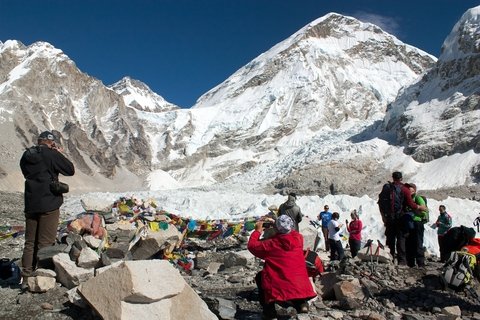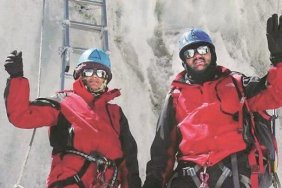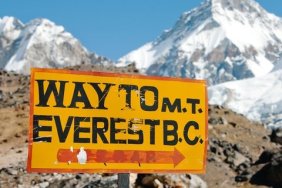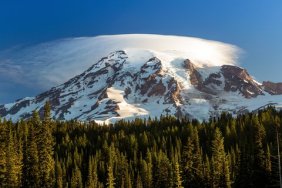Dramatic firsthand accounts continued to come in from Mount Everest on Monday as helicopters ferried stranded climbers to safety after what’s become the mountain’s deadliest day.
The avalanche that tore through Base Camp on Saturday resulted in the deaths of at least 21 climbers, including three Americans, and many others injured. An estimated 200 other climbers were then stranded in Camps 1 and 2 as the avalanche and following aftershocks destroyed the ropes and ladders that helped climbers navigate the treacherous Khumbu icefall. Following the earthquake, three sherpas attempting to secure a new pathway were tragically killed, according to National Geographic.
As Mount Everest climbers often travel with state-of-the-art communication equipment, reports to journalists and social media were received quickly in the from of blog posts and audio files. A film crew from Agence France Press was even on-hand to make a documentary at the time. One photographer in the group, Robert Schmidt, tells The Guardian newspaper the avalanche felt like a freight train.
“We went out of the tent and then we heard this most horrifying sound. It was like a train but came from so deep, just so powerful,” he told the paper.
Three helicopters made round-the-clock trips on Monday from Base Camp to Camps 1 and 2. As climbers reached their belongings, they were struck by the magnitude of what has become Mount Everest’s deadliest day.
Climber Thomas Martiensen recounts his experience to BBC saying “the whole mountain just came alive.” He said avalanches continued on the amount for 48 hours after the quake roughly every 30 minutes. Elia Saikaly, who found his gear scattered down the mountain, called the sherpas who died in the ice fall on Sunday the “unsung heroes of Everest.”
This morning 30+ helicopter flights were made above the Khumbu Icefall and into the Western CWM where stranded climbers...
Posted by Elia Saikaly on Monday, April 27, 2015
The earthquake also affected nearby peaks where climbers are less connected. Reports were just starting to come in from nearby Langtang, due north of Kathmandu and roughly 100 miles closer the earthquake’s epicenter than Everest, and Makalu, which sits 14 miles southeast of Everest, according to a report by Outside Magazine.
Before this accident, the deadliest day on Everest occurred on April 18, 2014 when an avalanche killed 16 Nepalese guides at base camp.
© Prudek | Dreamstime.com - Everest Base Camp, Khumbu Glacier And Tourists Celebrate Everest Base Camp -15th Of NoVember 201 Photo








